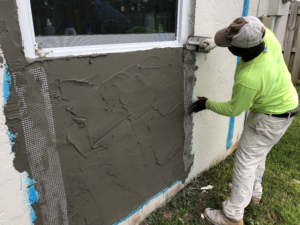From the zigzag post-and-rail patterns of Colonial North America to today’s molded vinyl styles, fences provide homeowners with a way to keep intruders off their property and kids and pets from wandering too far. They can also be beautiful.
Cedar is an excellent choice for a wood fence because it resists rot and insect pests. However, it may require a higher budget than pine. Contact Summerville Fence Co. now!

A fence is an options strategy that establishes a range around a position. It protects against significant downside losses but sacrifices some of the underlying asset’s upside potential. A fence is created using three options: a long put, a short call and an at-the-money bearish put spread. In the context of real estate, a fence is any wall or barrier made of wood, masonry, boards or other material erected to enclose land, restrict access or to screen areas. It does not include tarpaulins, scrap materials, hedges or other vegetation.
Boundaries are like fences in that they are markers of where one person’s property ends and another person’s begins. They also delineate personal space and signify a territory that is uniquely one’s own. Boundaries can be physical, emotional, spiritual or financial. Ideally, healthy boundaries will reflect one’s values and beliefs as well as provide room for healthy connection.
Sometimes, as with a fence, people may disagree about where a boundary line should be. However, a proper survey should be performed before the fence is built to ensure that it accurately marks the true property line and does not infringe on neighboring land. Failure to do so could result in costly legal disputes and the necessity to move the fence.
For example, a previous owner of the land may have used an old fence as a boundary marker when it was first constructed. While that may have been a convenient way to get around thick brush, trees or other obstacles at the time of construction, it was not the actual property line. Over time, the fence came to be thought of as the property boundary.
In this case, the new owner of the land would need to perform a metes and bounds survey to determine the correct boundary line, or enter into a written agreement with the other owners to settle the uncertainty. It is best to have an experienced attorney perform this work so that the resulting documents are clear and legally binding. In some instances, the parties may wish to record this agreement in the public records so that it binds future owners as well.
Security
The physical boundary of a fence can provide security by deterring casual intruders and hindering their attempts to scale the barrier. Fences can also be designed with a variety of toppings to provide additional security, such as roller barriers and razor wire. These devices are often more effective than traditional chain link fencing when it comes to preventing unwanted access, especially if they can be coupled with other security measures, such as perimeter intrusion detection systems (PID).
The type of material a fence is constructed from plays an important role in its security capabilities. Some materials are more durable than others, which means they are less likely to develop weaknesses over time that can be exploited by intruders. Furthermore, the durability of a fence material will influence how quickly it requires maintenance or repair, which will affect its overall level of security.
In addition to the physical properties of a fence, it is essential to consider the surrounding environment and how it can impact its security. For instance, a densely vegetated area may harbor intruders and make it more difficult to detect them. In contrast, a sparsely vegetated area may allow security personnel to see intruders and respond more quickly.
Another important factor is how easy it is to scavenge goods from a fence. A fence that can be easily climbed, breached or dug under provides an advantage to organized criminals who can use it to quickly turn stolen goods into cash. These groups may also rely on these fences to help fund other activities.
In some cases, fences will attempt to conceal the stolen nature of their goods by removing or replacing serial numbers and disassembling them before selling them in order to achieve better prices in auctions and pawn shops. Fences will sometimes even transport the goods to a different city before selling them in order to avoid the risk of being caught by local law enforcement.
The height of a fence is often a crucial factor in its security. However, it is not a simple matter of ‘the higher the better’ as several other factors must be taken into consideration. These factors include: the location of the fence, its height and configuration, engineering factors, and the presence of other security measures. In addition, a fence should be designed to delay an intruder (instead of allowing them to burrow under or climb over it) to give security personnel the chance to respond and nab the intruder.
Privacy
A privacy fence offers more than seclusion; it also helps preserve and protect property lines. As an added benefit, it can help you connect with neighbors through mutual respect and caring for your shared outdoor spaces. It’s important to consult with your neighbors during the construction process to ensure everyone agrees on cost-sharing and maintenance responsibilities. Doing so can also prevent conflicts, fines and costly rework down the road.
In addition to providing a sense of privacy, a fence can absorb noise and other external factors that can affect a backyard’s ambience and enjoyment. If your backyard is located near a busy street or highway, for example, you can experience annoyance from traffic noise and commotion while trying to enjoy the outdoors. A well-designed and built privacy fence can significantly reduce those unwanted sounds, allowing you to relax and unwind without the distractions of the outside world.
The direction a fence faces has implications that go beyond aesthetics, including neighborhood dynamics, security and property value. In most cases, the finished, smooth side—often referred to as the good side—faces outward toward neighborhoods, streets or public areas. This orientation presents a polished, visually appealing appearance and often aligns with local regulations.
On the other hand, some homeowners prefer to face the structural side of a fence inward in order to match adjacent fences, border non-residential areas or achieve specific aesthetic goals. Whether you choose to face the “good side” or the structural side of your fence, it is important to check with the zoning office and homeowner’s association to avoid fines and ensure your project adheres to all applicable rules.
In the case of privacy screens, the ease of installation and maintenance makes them an attractive choice for both residential and commercial projects. They can be installed in conjunction with existing chain link fences and require minimal structural modifications, resulting in reduced costs. Unlike traditional fencing solutions, privacy screens also offer the flexibility to adjust to changing environmental conditions and are reusable, making them a more sustainable option. Using privacy screens in construction can deliver more comprehensive benefits than just enhancing site aesthetics, including increasing safety and security, improving branding opportunities, and complying with environmental regulations.
Beauty
While a fence’s primary purpose may dictate design and materials, the homeowner also has the opportunity to consider aesthetics. Decorative ornaments and hanging wreaths are popular ways to elevate the look of a yard and home. These embellishments, however, can leave outlines on the fence’s surface and distort its uniformity. It’s advisable to consider the long-term implications of these additions before investing in them.
Color and texture also play a significant role in determining the dimensional appeal of a fence. Rough textures tend to make a fence appear more massive and noticeable while smooth textures provide an elegant and contemporary feel. Additionally, textured finishes often cast unique shadow patterns and lend a delightful visual and tactile experience.
While sun damage seems to be an unavoidable consequence of outdoor exposure, proactive measures can mitigate its effects. The use of sealants and protective coatings reduce moisture and rot while frequent staining prevents weathering and fading. For metal fences, quick attention to rust spots minimizes damage and extends the life of the material. Understanding the maintenance needs of different fence materials allows for an efficient and effective approach to keeping the exterior of your home and property in top condition.




